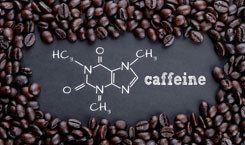Decaffeination
Its not a secret that the reason coffee is so popular is not only the caffeine it is containing but also its diverse and intensive set of flavors. Sometimes you may want to drink of cup of coffee - but you don’t want to drink caffeine. Especially for people with a caffeine intolerance, pregnant women or people who like to drink coffee before going to bed, a decaffeinated coffee is just the right thing.
The inventor of the decaffeination
The German coffee trader and founder of the still existing company „Kaffee Hag“, Ludwig Roselius developed the first decaffeination procedure for commercial quantities in 1903. His motivation was his suspicion of caffeine to be poisonous after his father, who was a heavy coffee drinker, died at a young age. To prevent more people dying from „caffeine poisoning“, he soaked raw coffee beans in salt water and extracted the caffeine with the aid of benzene.
Because of the carcinogenic benzene, the coffee he created with this method was probably more poisonous than the caffeine ever could have been but his product was indeed - more or less - decaffeinated. His caffeine-free coffee was a big success all over europa and until today, similar methods are being used for decaffeination - but without benzene.
Swiss Water process
That Ludwig Roselius was on the right track became clear when a Swiss company developed a similar method of decaffeination without the use of benzene in 1970. The raw beans are exposed to a hot water bath to extract GCE (Green Coffee Extract) which contains all the water-soluble components of the coffee beans except the caffeine. The raw coffee is then exposed to a hot CGE bath and because of the gradient pressure difference of the caffeine lean CGE and the caffeine rich raw coffee, the caffeine makes its way into the solution. After a couple of repetitions, the coffee is almost completely decaffeinated.
Because of the high energy and coffee consumption of this method, the Swiss Water process is not commonly used anymore. Since the taste and aroma of the decaffeinated coffee is supposed to be particularly genuine, some smaller companies still use this procedure for the production of decaffeinated luxury coffee.
Chemical Method
Roselius’ benzene method created the foundation for the chemical decaffeination of coffee beans. Just like back then, the raw beans are exposed to a chemical bath. The chemical solvents extract most of the caffeine through direct contact with the beans. Then, the beans are washed and dried.
Today, most businesses work work with extracting agents like methylene chloride and ethyl acetate instead of the poisonous benzene. But because methylene chloride was recently suspected to be carcinogenic, caffeine is mainly extracted with the ethyl acetate, naturally occurring in plants.
Carbon dioxide process
CO2 is the chemical formula for the molecule carbon dioxide, also known as carbon dioxide, consisting of carbon and oxygen. The gas carbon dioxide is colourless, soluble in water, non-flammable, odourless and non-toxic. Besides nitrogen, oxygen and so-called noble gases, it is a natural component of air.
In the carbon dioxide process, carbon dioxide is pressed at extremely high pressure against and through the beans that have previously been softened with hot water. The CO2 takes the caffeine with it - and the caffeine-free coffee bean is ready. The advantage of this process is that it recovers and reuses caffeine, which is extremely popular for medical purposes (caffeine tablets).
These roasters use the CO² process, which does not require chemicals: Kimbo Caffe, Lavazza, GEPA, Mocambo, Mokaflor, Nannini, Schreyögg
„Decaffeinated“ is relative
None of the methods we have today can extract 100% or the caffeine. Depending on the country, the coffee is sold in, there is different laws specifying, how much caffeine can be left inside a bean in order to declare it „caffeine-free“. In most countries, this limit is at 0,1% caffeine content. Regular coffee normally contains two to five percent caffeine.
Arabica beans are particularly well-suited for decaffeination because they naturally contain a lot less caffeine than robusta beans. Researches also developed genetically modified coffee plants that naturally grow beans without caffeine, making a coffee with 0,0% caffeine possible. But because of the strict European laws about genetically modified crops, these plants aren’t available yet.

